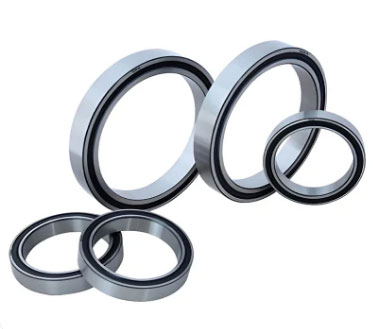Home / News / An Overview of Thin Section Bearings: Advantages, Types, and Applications
An Overview of Thin Section Bearings: Advantages, Types, and Applications
Thin section bearings, also known as slim bearings, are specialized types of ball bearings that are designed for use in applications with limited space and weight requirements. They have a small cross-section, which allows them to be used in areas where traditional ball bearings cannot fit. This article will provide an overview of thin section bearings, including their advantages, types, and applications.
Advantages of Thin Section Bearings
One of the primary advantages of thin section bearings is their ability to save space and weight. Due to their small cross-section, they can be used in applications where traditional bearings are too large or heavy. Additionally, thin section bearings offer excellent torque-to-weight ratios, which makes them ideal for use in high-speed applications.
Another advantage of thin section bearings is their high level of precision. These bearings are manufactured to very tight tolerances, which allows them to operate with low friction and high accuracy. This precision is especially important in applications that require smooth and consistent operation, such as robotics, medical equipment, and aerospace technology.

Types of Thin Section Bearings
Thin section bearings come in several different types, each with its unique features and benefits. The most common types of thin section bearings include:
Radial Contact Bearings: These bearings have a single row of balls that run along a groove in the inner and outer rings. They are designed to handle radial loads, which are forces that act perpendicular to the shaft.
Angular Contact Bearings: These bearings have two rows of balls that are angled to provide greater contact with the inner and outer rings. They are designed to handle both radial and axial loads, which are forces that act parallel to the shaft.
Four-Point Contact Bearings: These bearings have a unique design that allows them to handle both radial and axial loads while also accommodating tilting moments. They have four contact points between the balls and the raceways, which makes them ideal for use in applications that require high axial loads.
Applications of Thin Section Bearings
Thin section bearings are used in a variety of applications across many different industries. Some of the most common applications of thin section bearings include:
Robotics: Thin section bearings are used in robotics to provide smooth and precise motion control. They are ideal for use in robotic arms, grippers, and other components that require high precision and low friction.
Medical Equipment: Thin section bearings are used in medical equipment such as X-ray machines, CT scanners, and MRI machines. They are used in these applications because of their high precision and low friction, which allows them to operate smoothly and quietly.
Aerospace Technology: Thin section bearings are used in a variety of aerospace applications, including aircraft engines, landing gear, and satellite components. They are used in these applications because of their ability to operate at high speeds and with low friction.
Conclusion
Thin section bearings are specialized types of ball bearings that offer several advantages over traditional bearings. They are designed to save space and weight while offering high precision and low friction. With their unique features and benefits, thin section bearings are used in a variety of applications across many different industries, including robotics, medical equipment, and aerospace technology.
- Previous: Tubular Strander or Stranding Machine Bearings: High-Quality Components for Heavy-Duty Operations
- Next: Understanding Cylindrical Roller Bearings: Design, Types, and Applications













